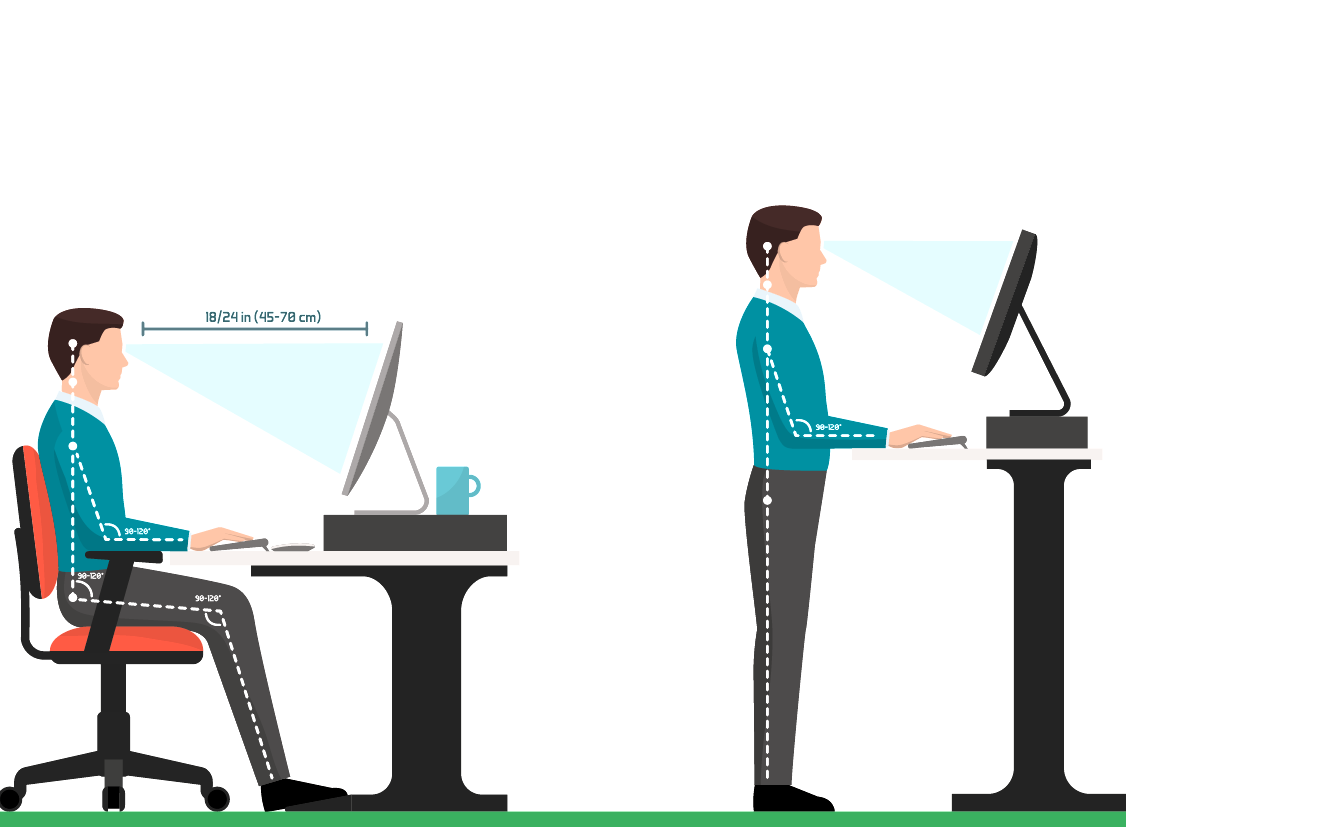
Let’s Talk Workplace Ergonomics!
Ergonomics is a holistic term that primarily refers to the overall process of arranging a workplace, systems, and equipment in a way that makes it easy for people to use them.
Foundations of an Ergonomic Design
An ergonomic workspace is designed to optimize the efficiency, comfort, and well-being of individuals working within it. Creating an ergonomic workspace involves understanding the unique needs and preferences of individuals and tailoring the workspace accordingly.
Here are some key elements of an ergonomic workspace:
1. Ergonomic Chairs – An ergonomic chair is designed to support one’s back, hips, and thighs and help maintain good posture while seated. Features that mark a chair as ergonomic may include adjustable seat height, lumbar support, and adjustable armrests. The goal of an ergonomic chair is to create a chair that adapts to the user’s body, promoting proper alignment and reducing the strain on the spine.
2. Height Adjustable Desks – The primary purpose of a height-adjustable desk is to provide individuals with the flexibility to switch between sitting and standing positions while working. The desks are designed to accommodate various user preferences, promote better posture, and reduce the negative effects of prolonged sitting.
3.Monitor Placement – Positioning the computer monitor so the top of the screen is at or slightly below eye level will significantly help reduce eye strain, neck pain, and headaches. A computer monitor stand can help position the monitor at the correct height and distance from the body. They are typically adjustable for height and tilt to make for the best posture for each employee.
4. Anti-Fatigue Mats – Standing in one spot for an extended period of time can result in fatigue or even pain in the feet, legs, and spine. Using an anti-fatigue matcan contribute to enhanced comfort, improved productivity, and a reduction in musculoskeletal fatigue especially for individuals whose jobs involve prolonged standing.
5. Keyboard and Mouse Placement – Place the keyboard and mouse in a position that allows elbows to be at a 90-degree angle and wrists to be straight. Avoid placing these items too far away, which can cause overreaching and shoulder strain.
The primary goal of ergonomic design is to create a workspace that minimizes physical strain and discomfort and supports overall health.
In addition to reducing the risk of injury, ergonomics positively impacts productivity and job satisfaction!




A big thank you to Antarc Kenya for shedding light on the crucial topic of workplace ergonomics! This article provides valuable insights into creating comfortable and efficient workspaces, fostering employee health and productivity. A must-read for anyone striving to improve their work environment.
Workplace ergonomics is indeed an increasingly important and crucial topic. We’re thrilled to hear that you found our article on workplace ergonomics valuable and insightful. We are passionate about creating comfortable and efficient workspaces that prioritize employee health and productivity!
Ergonomic Chairs! with good lumbar support are best for back pain. Look for adjustability in seat height, armrests, and backrest.
Yes! Lumbar support plays a great role in promoting good posture which helps ease back pain.
Your posts in this blog really shine! Glad to gain some new insights, which I happen to also cover on my page. Feel free to visit my webpage Webemail24 about Search Engine Optimization and any tip from you will be much apreciated.